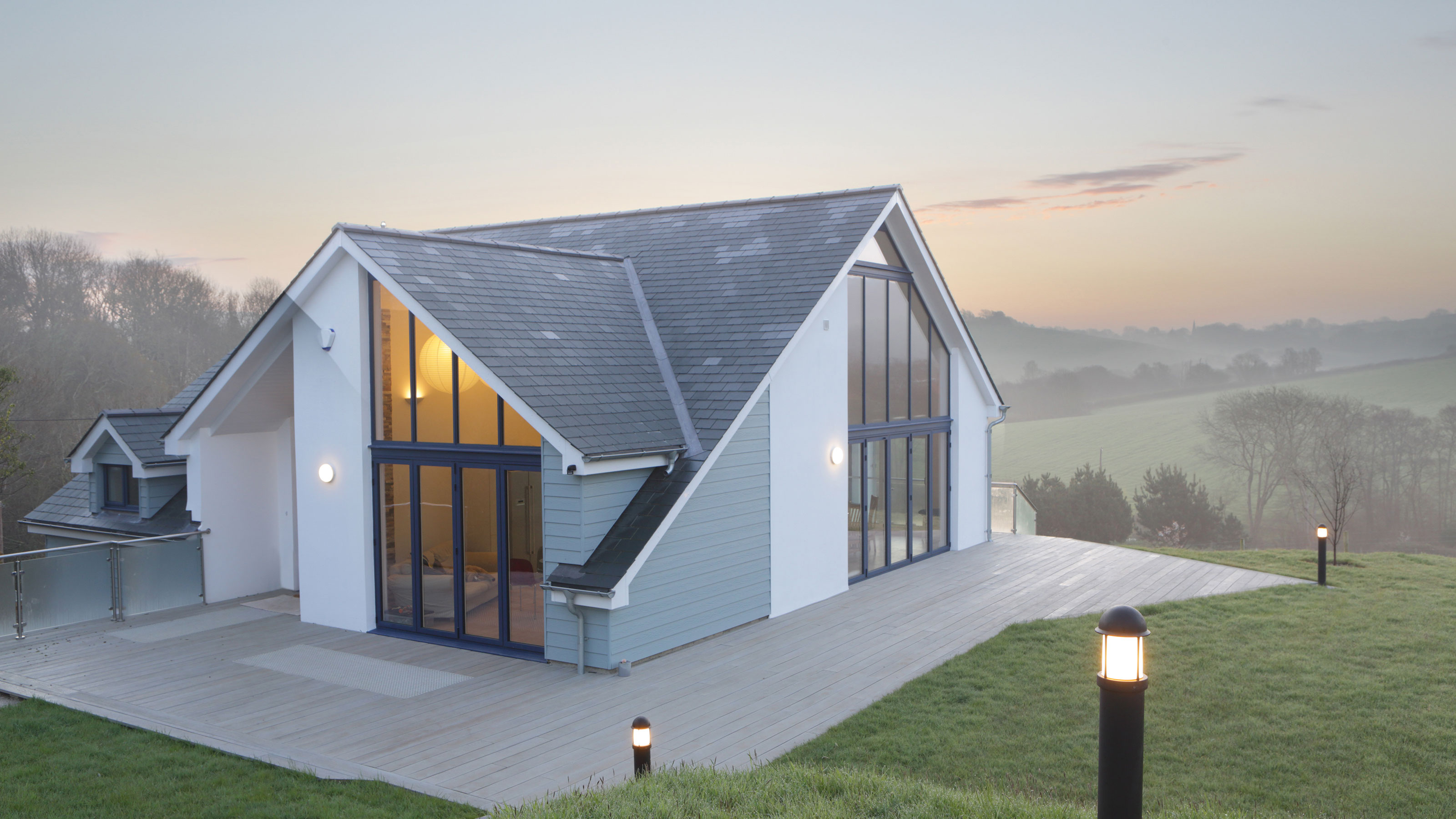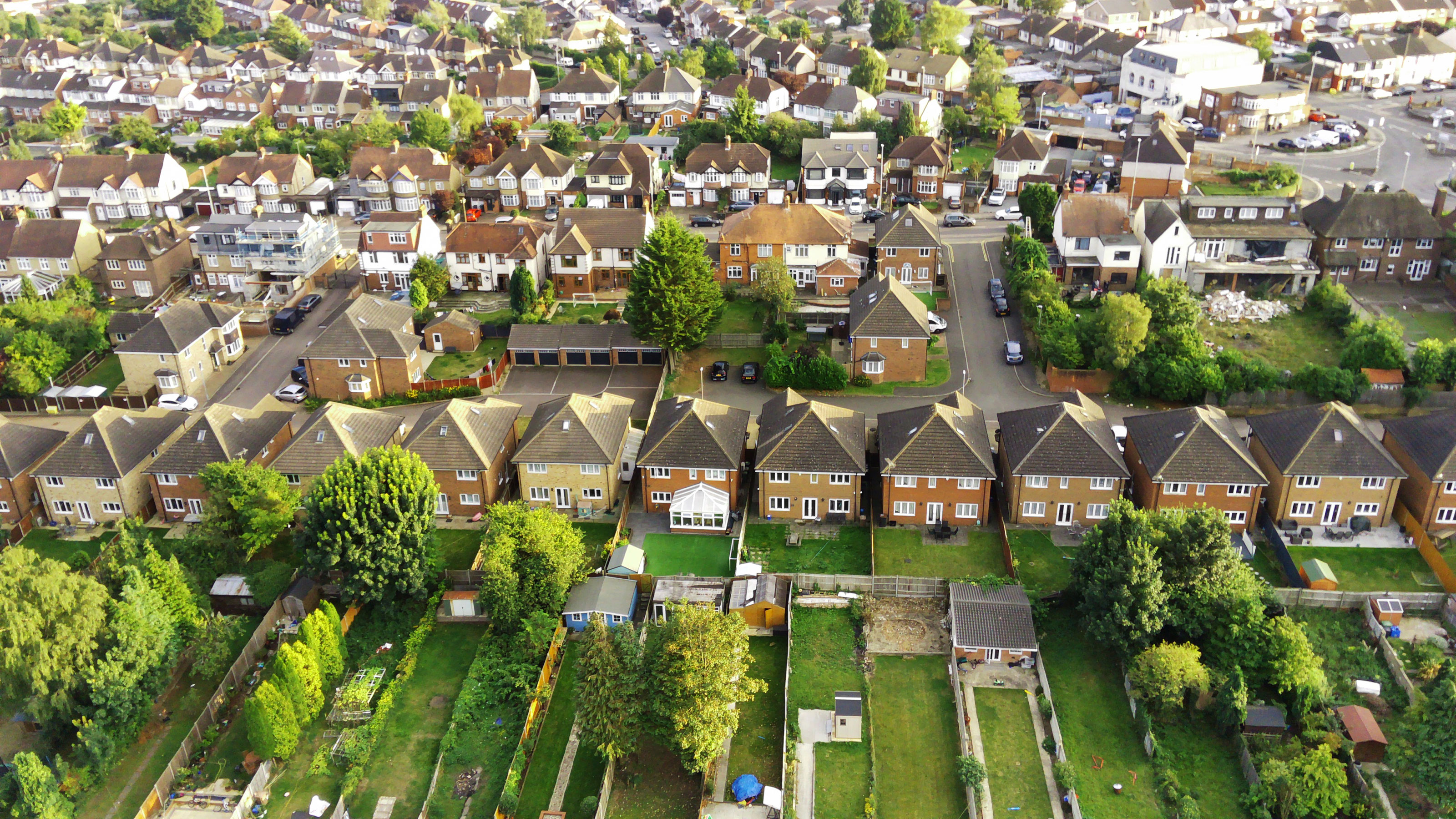What is Part Z? How building regulations proposal could affect self builders
Architect Paul Testa explains how the proposed Part Z could work in lowering carbon emissions from new buildings

Part Z is a proposed amendment to the building regulations that would cap embodied carbon emissions during building work.
This would affect major construction projects – but also could affect self builders.
The push towards net zero has seen several major updates to the building regulations this year, and Part Z is the latest proposal designed to achieve this. Under the proposals, Part Z would essentially limit the carbon intensity of new buildings.
Part Z is a construction industry proposal (rather than government), but work is being done to ensure it is introduced soon, with recommended timescales beginning from 2023.
Our expert, architect Paul Tesla, explains everything you need about Part Z and the steps that could be taken to regulate carbon emissions from buildings in the future.
What is Part Z?
To first understand the proposals in Part Z, it’s important to explain the differences between embodied carbon and whole life carbon emissions:
- Whole life carbon emissions refers to the carbon buildings emit in all parts of their life; materials, construction, operation, demolition and removal
- Embodied carbon refers to carbon emissions generated through the production of materials, transport to site and the construction of a building.
The current proposal looks to enforce reporting on the whole life carbon of new buildings and limit the carbon intensity. This is seen as a realistic first step, although the creators of Part Z acknowledge that it might develop to limit whole life carbon in the future.
Part Z would also ensure that embodied carbon emissions are capped on all major construction projects - initially through limits on upfront embodied carbon, but over time expanding to cover all aspects of embodied carbon. This approach is designed to develop achievable, but aspirational targets.
When could Part Z be implemented?
Part Z is not yet a regulation but in April 2023 in the UK parliament, Lord Ravensdale (Daniel Mosley) proposed an amendment known as Amendment 484 during the committee stage debate on the levelling up bill. The amendment called for introducing whole-life carbon reporting on major building projects to regulate embodied carbon, contributing to 50 million tonnes of emissions.
Lord Ravensdale emphasised that the industry has the capacity and will to address embodied carbon but is hindered by a lack of regulation. The proposed amendment received support from Lord Best, Lord Stunell, and Baroness Hayman, while Lord Lansley urged the government to take even stronger action.
Nonetheless, the government did not endorse the amendment, citing a lack of agreement on the appropriate means, mechanisms, and timing for its implementation. This rejection followed the government's failure to support the Carbon Emissions (Buildings) Bill presented by Jerome Mayhew MP in the Commons.
Despite the setbacks, the movement towards regulating embodied carbon is gaining traction. The Department for Levelling Up, Housing and Communities has committed to consulting on their strategy for embodied carbon regulation this year and has commissioned further industry research on the topic.
If implemented the proposed timescales for the implementation of the Part Z amendment are divided into two parts, each with different enforcement dates:
- Requirement Z1 - Carbon Assessment: This concerns the assessment and reporting of whole life carbon, and gives a common framework in which to do this. It would apply to buildings other than dwellings from 2023, and all dwellings from 2025
- Requirement Z2 - Carbon Intensity: This sets maximum upfront, embodied carbon limits, and would apply to all buildings from 2027.
The reasoning behind Z1 applying earlier than Z2 is that the first 2-4 years of reporting will enable achievable and robust targets to be set for Z2 that are appropriate for the industry. These would then be reviewed on a three-yearly cycle.

What impact could Part Z have on self builders?
It’s unclear right now what Part Z might mean for anyone taking on a self build project in the future and whether Part Z will affect building regulations for extensions.
Whether or not the government will choose to adopt a Part Z and in what form is unknown. If they do adopt it in a similar form to what has been proposed, I would expect the transition to be quite gentle. Consultants getting their heads around the reporting will be the biggest challenge, but as with all industry changes, we will all quickly adapt.
I would expect, when any limits are then set, that most self builders will be able to comfortably adapt their designs to achieve these limits without significant compromise.
Why are new carbon targets important?
The manufacturing of building materials makes up a staggeringly high 11% of global greenhouse gas emissions, according to data from the United Nations Environment Programme.
It’s also just been reported from a new study published in Ecological Economics that the UK’s housing targets alone - to build 300,000 homes per year - will mean that we over-sail our entire 1.5°C carbon budget by 2050.
This budget is for the whole life carbon of our existing and proposed homes, but a huge chunk of this between now and 2050 is the embodied carbon introduced via new homes. Therefore it’s definitely something we need to get a handle on urgently as well as considering other building regulation changes coming into effect.
Who proposed Part Z?
The Proposed Document Z follows the Royal Institution of Chartered Surveyors (RICS) Professional Statement, ‘Whole life carbon assessment for the built environment’.
It also uses guidance and recommendations made by industry groups including the Royal Institute of British Architects (RIBA), the Institution of Structural Engineers (IStructE), the Chartered Institution of Building Services Engineers (CIBSE), the UK Green Building Council (UKGBC) and the London Energy Transformation Initiative (LETI).
In April 2023 in the UK parliament, Lord Ravensdale (Daniel Mosley) proposed an amendment known as Amendment 484 during the committee stage debate on the levelling up bill. The amendment called for the introduction of whole life carbon reporting on major building projects to regulate embodied carbon, which contributes to 50 million tonnes of emissions.
Lord Ravensdale emphasised that the industry has the capacity and will to address embodied carbon but is hindered by a lack of regulation. The proposed amendment received support from Lord Best, Lord Stunell, and Baroness Hayman, while Lord Lansley urged the government to take even stronger action.
Nonetheless, the government did not endorse the amendment, citing a lack of agreement on the appropriate means, mechanisms, and timing for its implementation. This rejection followed the government's failure to support the Carbon Emissions (Buildings) Bill presented by Jerome Mayhew MP in the Commons.
Despite the setbacks, the movement towards regulating embodied carbon is gaining traction. The Department for Levelling Up, Housing and Communities has committed to consulting on their strategy for embodied carbon regulation this year and has commissioned further industry research on the topic.
Get the Homebuilding & Renovating Newsletter
Bring your dream home to life with expert advice, how to guides and design inspiration. Sign up for our newsletter and get two free tickets to a Homebuilding & Renovating Show near you.
Architect Paul is the director of HEM Architects and a specialist in low-energy design. HEM Architects are well-versed in designing sustainable, energy-efficient new builds and extension schemes. He has also just completed an eco retrofit to his family home.
He taught the technology course for the MArch in Architecture at Sheffield University, and is a tutor for the Sustainable Architectural Studies Masters course.
- Joseph MullaneNews Editor

